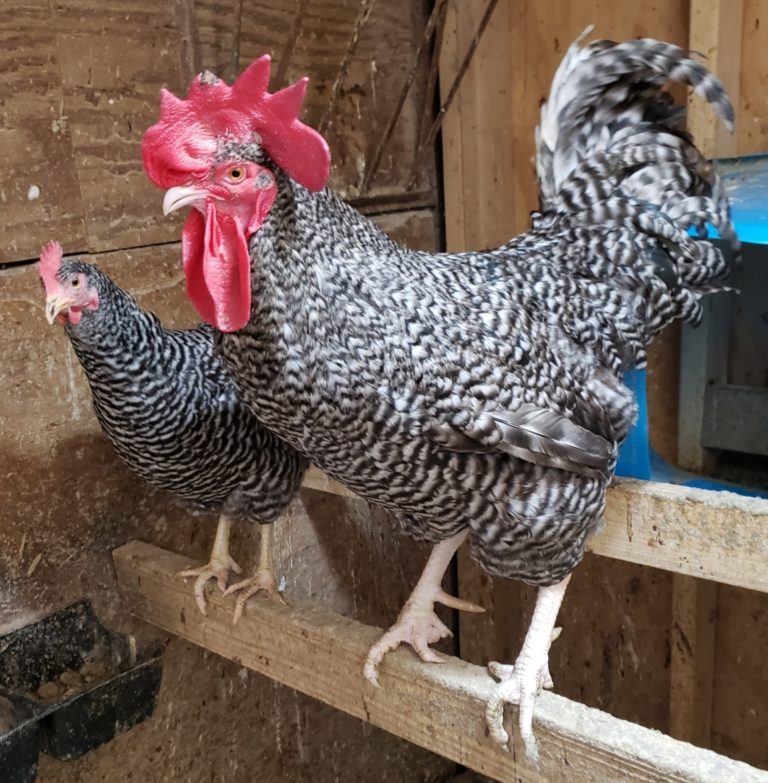
What are Barred Rock Chickens?
From The Livestock Conservancy:
The Plymouth Rock (or Barred Rock) was developed in America in the middle of the 19th century and was first exhibited in Boston, Massachusetts as a breed in 1849. These first specimens seemed to “lose their identity” and the breed disappeared for two decades until it reappeared at another poultry show in Worchester, Massachusetts in 1869. These later birds are considered the progenitors of the Plymouth Rocks we know today. Several individuals claimed invention, using crosses of Spanish, White Cochin, Dominique, Buff Cochin, Black Java, and Brahma. The original Plymouth Rock chicken was of the Barred variety and other color varieties were developed later including: White, Buff, Silver Penciled, Partridge, Columbian, and Blue. The breed was accepted into the American Poultry Association’s Standard of Excellence in 1874.
The Plymouth Rock became popular very rapidly, and in fact, until World War II, no breed was ever kept and bred as extensively as these birds. Its popularity came from its qualities as an outstanding farm chicken: hardiness, docility, broodiness, excellent production of brown eggs, and meat that was considered tasty and juicy. The Plymouth Rock was one of the foundation breeds for the broiler industry in the 1920’s.